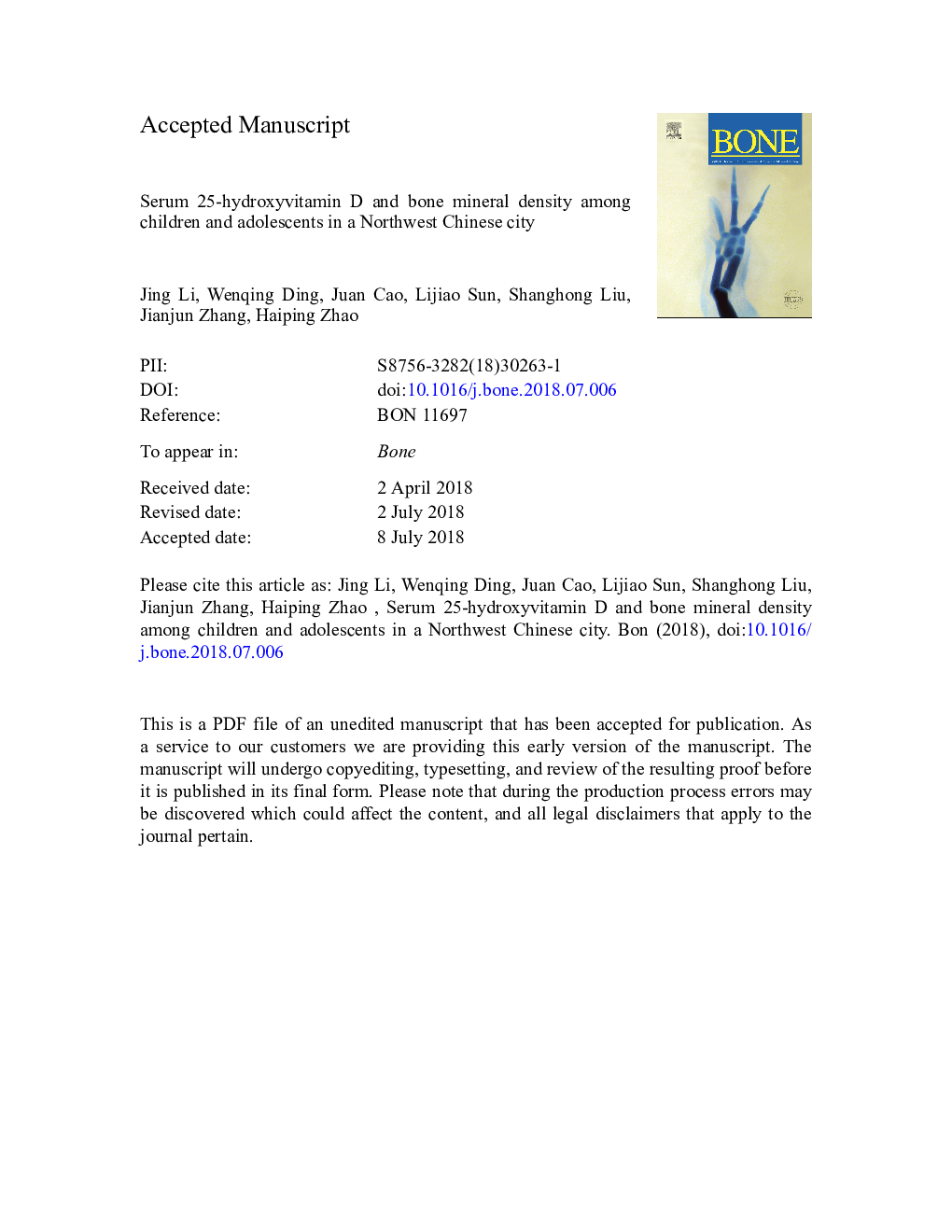| کد مقاله | کد نشریه | سال انتشار | مقاله انگلیسی | نسخه تمام متن |
|---|---|---|---|---|
| 8624737 | 1568104 | 2018 | 33 صفحه PDF | دانلود رایگان |
عنوان انگلیسی مقاله ISI
Serum 25-hydroxyvitamin D and bone mineral density among children and adolescents in a Northwest Chinese city
دانلود مقاله + سفارش ترجمه
دانلود مقاله ISI انگلیسی
رایگان برای ایرانیان
کلمات کلیدی
موضوعات مرتبط
علوم زیستی و بیوفناوری
بیوشیمی، ژنتیک و زیست شناسی مولکولی
زیست شناسی تکاملی
پیش نمایش صفحه اول مقاله

چکیده انگلیسی
Although vitamin D is essential for bone health, little is known about prevalence of vitamin D deficiency and low bone mineral density (BMD) among children, especially those in developing countries. It also remains unclear whether serum 25-hydroxyvitamin D [25(OH)D] is associated with BMD among children. We investigated these questions among children and adolescents in Yinchuan (latitude: 38°â¯N), Ningxia, an economically underdeveloped province in Northwest China. A total of 1582 children (756 boys and 826 girls), aged 6-18â¯years, were recruited from schools using the stratified random sampling method in fall 2015. Serum 25(OH)D concentrations were measured by enzyme-linked immunosorbent assay, and BMD was quantified by dual-energy X-ray absorptiometry. Vitamin D deficiency (defined as serum 25(OH)D â¤â¯37.5â¯nmol/L) was present in 35.5% of study subjects. There were no clear patterns of differences in serum 25(OH)D concentrations across the four age groups compared (6-9â¯years, 10-13â¯years, 14-16â¯years, and 17-18â¯years). The prevalence of low total body less head (TBLH) BMD (defined as a Z-score of â¤â¯â2.0 standard deviations away from the mean BMD values of the Chinese pediatric reference population) among children examined was 1.8% and was not significantly different among the four age groups considered. Linear regression analysis revealed that age, weight, and height were significantly and positively associated with TBLH BMD and that the strongest determinant of TBLH BMD was age in boys and weight in girls. There were no significant correlations between serum 25(OH)D concentrations and BMD obtained for total body and at various skeletal sites (r ranged from â0.005 to 0.014) regardless of whether children evaluated were sufficient, insufficient, or deficient in vitamin D. In conclusion, more than one-third of children and adolescents in a Northwest Chinese city were deficient in vitamin D but only <2% of them developed low BMD.
ناشر
Database: Elsevier - ScienceDirect (ساینس دایرکت)
Journal: Bone - Volume 116, November 2018, Pages 28-34
Journal: Bone - Volume 116, November 2018, Pages 28-34
نویسندگان
Jing Li, Wenqing Ding, Juan Cao, Lijiao Sun, Shanghong Liu, Jianjun Zhang, Haiping Zhao,